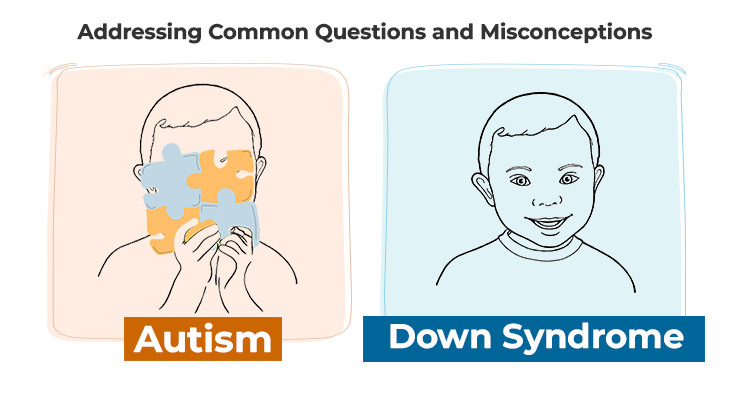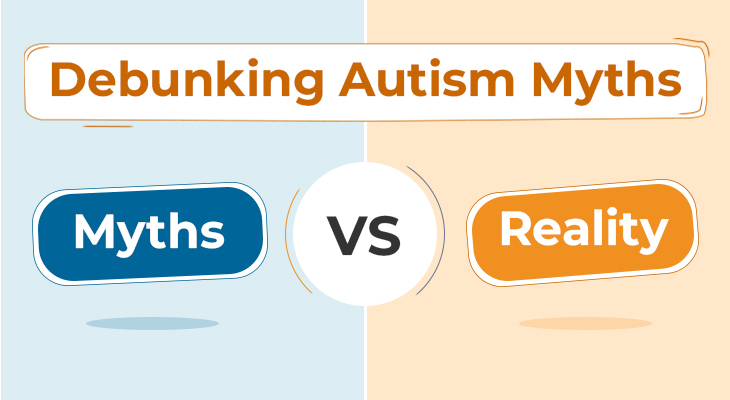What is ABA Therapy?
ABA therapy, which stands for Applied Behavior Analysis, is a way of learning that focuses on rewarding positive behaviors and helping people reduce challenging behaviors or develop new skills.
Sometimes, behaviors can become too frequent or intense, causing difficulties in daily life. These are often called ‘challenging behaviors’ and can include things like tantrums, meltdowns, repetitive actions, or difficulty following instructions.
ABA therapy can be particularly helpful in addressing these challenges. ABA therapists work closely with individuals and their families to identify these specific challenging behaviors. They then develop a personalized plan to address them. This plan often involves positive reinforcement for desired behaviors, alongside strategies to reduce the occurrence of challenging ones.
In some cases, ABA therapy may be combined with other approaches like Cognitive Behavioral Therapy (CBT) to achieve even greater results.
This blog post will delve deeper into the principles of ABA therapy, explore its benefits, and answer common questions parents may have.
Understanding ABA therapy
Have you ever wondered why children act the way they do? Understanding the reasons behind behaviors is crucial, especially when it comes to modifying them. In ABA therapy, this initial step involves identifying the function of a particular behavior. This essentially means figuring out what the child is trying to achieve through their actions.
Understanding Why We Behave: The Four Functions of Behavior
Here are four main categories that encompass most behaviors:
- Access to Attention: Sometimes, behaviors are simply a cry for attention. Imagine a student who starts acting out in class. They might be craving the acknowledgement of their peers or the teacher’s intervention.
Example: A toddler throws a tantrum in the grocery store because his/her parents refuse to buy him/her candy. The tantrum might be a way to get the parent’s attention and potentially change their mind. - Access to Tangibles: This function is all about getting something desired. A classic example is a child who throws a fit in the checkout line, demanding a specific toy. If the parent gives in to stop the scene, the child learns that this behavior leads to the desired outcome.
Example: A teenager cleans their room meticulously only when they know it will result in getting permission to go to a party. - Access to Escape: Sometimes, behaviors are a way to avoid something unpleasant. This could be a boring task, a reprimand, or even a specific activity. Imagine a child who suddenly complains of stomach pain right before bedtime to avoid going to sleep.
Example: An employee starts arriving late to work consistently to escape a particularly demanding project they’ve been assigned. - Sensory: Our nervous system can also influence behavior. Certain actions might provide a calming or stimulating sensation that the person seeks out. Fidgeting, nail-biting, or rocking back and forth can all be examples of sensory-seeking behaviors.
Example: A child chews on their pencil in class not because they’re hungry, but because the chewing provides a soothing sensation for their nervous system.
The Core Principles of ABA Therapy: Understanding How We Learn
Now that we understand the “why” behind behaviors, let’s explore the core principles of ABA therapy that inform how these behaviors can be modified. These principles all revolve around the concept of consequences and their impact on future behavior.
- Behavior is controlled by consequences: The actions we take are heavily influenced by the outcome. If a behavior consistently leads to a positive outcome (reinforcement), it’s more likely to be repeated. Conversely, if a behavior leads to an undesirable outcome (punishment) or no outcome at all (extinction), it’s less likely to be repeated in the future.
- Reinforcement (reward) increases or strengthens behavior: Positive reinforcement is a key tool in ABA therapy. When a desired behavior occurs, it’s followed by a reward, making it more likely to happen again in the future.
Example: A child who completes their homework without being reminded receives praise from the parent, strengthening the behavior of completing homework independently. - Punishment decreases or weakens behavior: Punishment can be used to discourage unwanted behaviors. However, it’s important to note that punishment can also have unintended consequences, such as fostering resentment or fear. ABA therapy often utilizes positive reinforcement techniques as a more effective long-term strategy.
Example: A child who throws a tantrum might lose the privilege of watching their favorite TV show for a short period. The goal is to discourage tantrums in the future. - Extinction is the process of withholding reinforcement for a previously reinforced behavior: When a behavior no longer leads to a desired outcome (previously reinforcing consequence), it’s likely to decrease in frequency.
Example: A child who throws a tantrum to get attention might be ignored by the parent until he/she calms down. Over time, if the tantrums no longer get a reaction, they’re likely to decrease.

Download Download & share this infograph card in your network [Free Download]
What are the dimensions of ABA therapy?
The seven dimensions of ABA therapy act as a framework for designing and implementing effective interventions. Here’s a breakdown of each dimension with a specific example:
- Applied: This dimension emphasizes focusing on real-world behaviors that have a significant impact on an individual’s daily life.
Example: A child with Autism Spectrum Disorder (ASD) has difficulty making eye contact during conversations. ABA therapy wouldn’t focus on teaching them the abstract concept of “eye contact,” but rather on developing skills for making eye contact with trusted adults during greetings or when requesting something. - Behavioral: This dimension highlights the importance of targeting observable and measurable behaviors.
Example: In the previous example, the therapist might define “making eye contact” as looking at another person’s eyes for at least two seconds. This clear definition allows for easier measurement and tracking of progress. - Analytic: This dimension underscores the importance of data collection and analysis to assess the effectiveness of interventions and make adjustments as needed.
Example: The therapist might track the frequency and duration of the child’s eye contact during interactions with different adults. This data can then be used to evaluate if the current approach is working and identify areas for improvement. - Technological: This dimension emphasizes using effective and efficient techniques to achieve desired outcomes.
Example: The therapist might use a positive reinforcement strategy like offering a small reward (sticker, praise) every time the child makes eye contact during a conversation. This technique has been shown to be effective in increasing desired behaviors. - Conceptually Systematic: This dimension underlines the importance of basing interventions on established principles of behavior analysis, not random guesses.
Example: The positive reinforcement strategy used in the previous example is grounded in the principle that reinforcement strengthens desired behaviors. This approach is based on years of research on how behavior is influenced by its consequences. - Effective: This dimension highlights the importance of producing positive and meaningful results for the individual receiving therapy.
Example: Through ABA therapy, the child with ASD becomes more comfortable making eye contact, leading to improved communication and social interactions with others. This positive outcome demonstrates the effectiveness of the intervention. - Generality: This dimension emphasizes generalizing learned skills and behaviors across different settings and situations.
Example: The therapist wouldn’t just practice eye contact during therapy sessions but would also integrate these practices into other activities and interactions. This helps ensure the child can make eye contact not just with the therapist, but also with teachers, classmates, and family members at home.
How does ABA therapy help in the treatment of autism?
It’s important to remember that ABA therapy is not a cure for Autism, but rather a tool to help individuals, with autism, develop skills and manage their symptoms in several key areas such as:
- Communication: Many people with ASD struggle with verbal and nonverbal communication. ABA therapy can help them learn to use words, pictures, gestures, or assistive technology to express themselves effectively.
- Social Skills: Social interaction can be challenging for individuals with ASD. ABA therapy can help them develop skills like making eye contact, initiating conversations, taking turns and playing cooperatively.
- Daily Living Skills: ABA therapy can assist with developing essential skills for independent living, such as dressing, toileting, eating, personal hygiene, and self-care routines.
- Reduction of Challenging Behaviors: Some individuals with ASD may exhibit challenging behaviors like tantrums, meltdowns, self-harm, or repetitive actions. ABA therapy can help identify the triggers for these behaviors and develop strategies to manage them.
What is the evidence that ABA therapy works for autism?
The effectiveness of ABA therapy can vary depending on the individual’s age, severity of symptoms, and intensity of the therapy program. But, as per the NIG study, Patient Outcomes After Applied Behavior Analysis for Autism Spectrum Disorder there is evidence that early and intensive ABA intervention can improve outcomes for children with ASD. Meta-analyses suggest that ABA results in small to moderate improvement in adaptive behavior, including socialization, communication, and expressive language.
Is ABA therapy only for autism?
No, ABA therapy is not only for Autism. While it’s commonly used and very effective in treating Autism Spectrum Disorder (ASD), ABA therapy can be applied to a wider range of challenges and can benefit individuals of all ages. Here’s a breakdown:
- Primary Use: ABA therapy is most recognized for its successful application in treating children with ASD. It helps them develop communication, social skills, daily living skills, and manage challenging behaviors.
- Applications Beyond Autism: The core principles of ABA therapy – focusing on positive reinforcement, breaking down skills into smaller steps, and using data to track progress – can be beneficial for individuals with various challenges.
- Examples include developmental delays, learning disabilities, attention deficit hyperactivity disorder (ADHD), anxiety, and even some phobias.
- It can also be used to improve communication and social skills in individuals who haven’t been diagnosed with any specific condition.
Conclusion
ABA therapy isn’t a one-size-fits-all solution, but rather a powerful tool that can be customized to address the unique needs of each child with Autism Spectrum Disorder (ASD). By understanding the “why” behind behaviors and implementing targeted interventions, ABA therapy can unlock a child’s potential for growth and success in various areas.
From fostering communication and social skills to mastering daily living activities and managing challenging behaviors, ABA therapy offers a framework for positive and lasting change. If you’re a parent or caregiver of a child with ASD, consider exploring how ABA therapy can empower your child to reach their full potential. Consult with a qualified healthcare professional to discuss if ABA therapy is right for your child and explore resources available to guide you on this journey.
Remember: While this blog post has provided information on ABA therapy, consulting a qualified healthcare professional is essential for any concerns regarding your child’s development and to discuss the most appropriate course of action.





